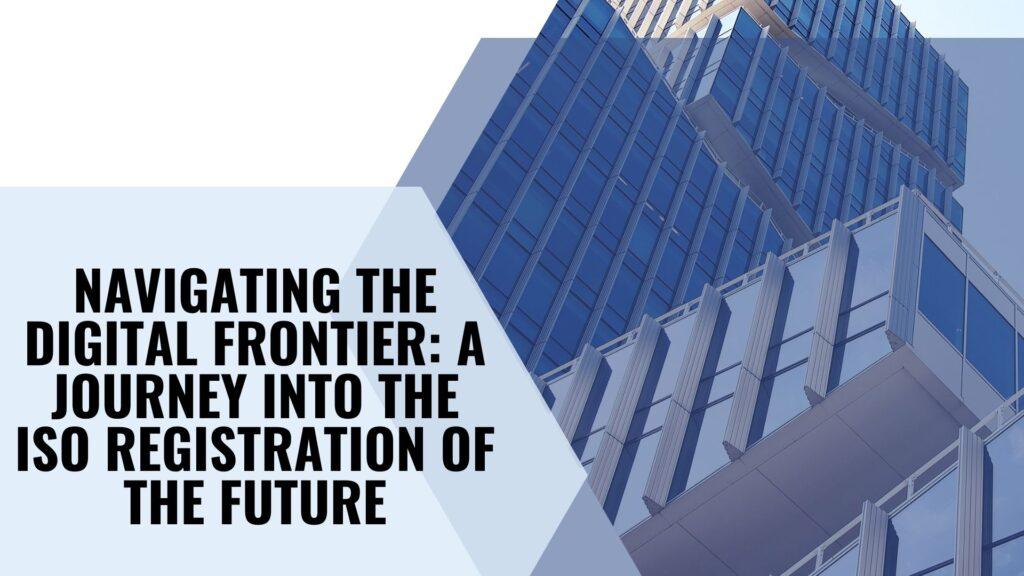Introduction
In an increasingly interconnected and technology-driven world, it’s imperative for businesses to adapt and thrive in the digital age. One vital aspect of this adaptation is transitioning into the digital age of ISO registration. ISO (International Organization for Standardization) certification has long been a hallmark of quality, but the process of achieving and maintaining it is evolving. In this article, we will explore the transformation of ISO registration into the digital realm and its impact on businesses.
The Traditional ISO Registration Process
Before we delve into the digital age of ISO registration, let’s take a step back and understand the traditional process. ISO certification involves meeting a set of internationally recognized standards to ensure quality, efficiency, and consistency in various industries. The conventional path to ISO certification typically included the following steps:
Documentation:
Organizations would start by documenting their processes and quality management systems extensively.
Manual Audits:
ISO auditors would conduct on-site visits, reviewing the documentation and evaluating the organization’s compliance with the relevant standards.
Non-Conformities:
Any non-conformities or deficiencies identified during the audit would need to be addressed through corrective actions.
Certification:
After successful audits and corrective actions, organizations would receive ISO certification.
Ongoing Audits:
Regular surveillance audits were required to maintain certification, with auditors revisiting the organization periodically.
Challenges with the Traditional Approach
While this traditional approach served its purpose for many years, it had its drawbacks:
Resource-Intensive:
The process was often resource-intensive, requiring significant time, manpower, and documentation.
Inefficiency:
On-site audits were sometimes disruptive to daily operations and could lead to delays in certification.
Limited Visibility:
Organizations had limited real-time visibility into their ISO compliance status.
Costs:
The expenses associated with on-site audits, travel, and related logistics could be substantial.
The Digital Transformation of ISO Registration
The digital age of ISO registration leverages technology to overcome these challenges and streamline the process. Here are some key components of this transformation:
Digital Documentation:
Organizations now use digital tools and platforms to create, store, and manage their ISO documentation. Cloud-based solutions facilitate easy access and collaboration among team members, auditors, and certification bodies.
Remote Auditing:
Remote audits have gained prominence, reducing the need for physical on-site visits. Auditors can assess compliance by examining digital documentation and conducting virtual meetings.
Automation:
Automation tools help organizations identify and address non-conformities more efficiently. These tools can track and report on compliance metrics in real time.
Data Analytics:
Data analytics are increasingly used to monitor and improve processes, helping organizations proactively maintain ISO compliance.
Blockchain Technology:
Some organizations are exploring blockchain technology to create immutable records of ISO compliance, enhancing transparency and trust.
Benefits of Going Digital
The transition to the digital age of ISO registration offers several advantages:
Cost Savings:
Reduced travel and on-site audit expenses translate into cost savings for organizations.
Efficiency:
Digital tools and automation streamline the ISO registration process, making it more efficient and less disruptive to daily operations.
Real-Time Visibility:
Organizations can monitor their ISO compliance status in real time, addressing issues promptly.
Environmental Impact:
Reduced travel and paper usage contribute to a smaller carbon footprint, aligning with sustainability goals.
Global Accessibility:
Remote auditing enables organizations to work with auditors from anywhere in the world, expanding their options for certification bodies.
Note: You Can Apply for ISO 29990 Certification
Conclusion
The digital age of ISO registration represents a significant shift in how organizations pursue and maintain ISO certification. While the traditional process had its merits, the digital transformation brings efficiency, cost savings, and real-time visibility into compliance. Embracing this change not only ensures that businesses remain competitive in today’s fast-paced world but also aligns with the broader digital transformation trends shaping industries across the globe. As we continue to step into this digital frontier, it’s clear that the future of ISO registration is both exciting and promising.

